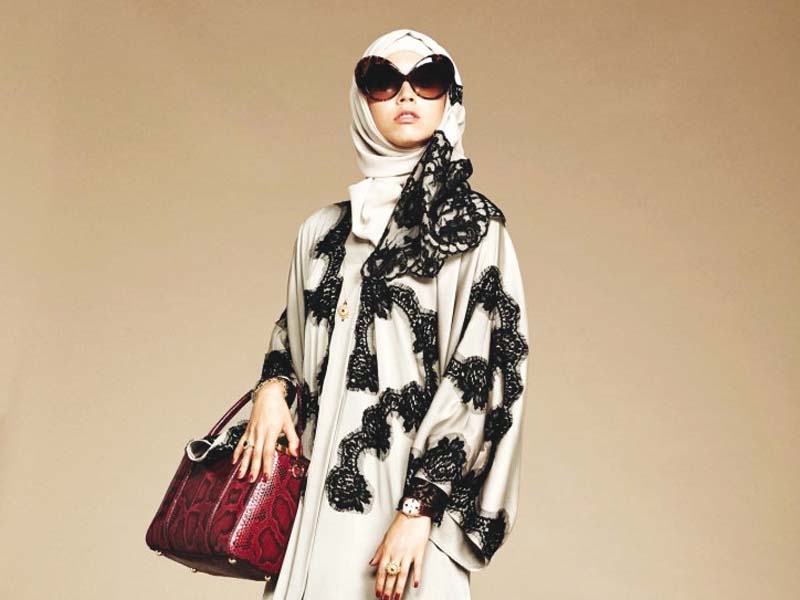
Istanbul is positioning itself to be a hub in this nascent industry, which, according to Dubai-based Islamic Fashion and Design Council, could be worth almost $500 billion within decades.
Modanisa — a Turkish online Muslim clothing retailer — started small in 2011 and today, is one of the biggest names in the market. It offers more than 30,000 products, from casual tunics and shiny evening wear to sports gear, shoes and accessories. It offers 300 brands and ships to 75 countries.
The firm calls itself the “first online fashion and shopping website for women who embrace a modest dressing style.” The CEO Kerim Ture said that in the years past, there was so little choice that a religiously conservative young woman had no option but to wear the same clothes as her mother. “If that was happening in a country like Turkey, where 99% of its population is Muslim, we wondered how the situation was around the world,” he shared. “That’s how we’ve started our online business.”
Ture was surprised by this summer’s furore in secular France, over whether Muslim women had the right to wear the burkini swimsuit, which covers all but the hands, feet and face. French courts ultimately ruled that a burkini ban by some 30 towns was “clearly illegal” and a violation of fundamental rights.
But for Ture, the burkini is not a symbol; it’s a choice. “I barely understand how a country, one of whose main pillars is freedom, can oppose the Muslim swimsuit,” he said. His firm’s catalogue offers a range of “fully closed swimsuits” starting at 40 euros ($45) and ironically, its burkini sales jumped during the debate by 15% to 20% in France itself and 30% to the Netherlands.
In May, Istanbul hosted its first conservative fashion week at the historic Haydarpasa train station, to showcase the rapidly growing market. It was organised by Franka Soeria from Indonesia, another centre for Islamic clothing. As a global consultant on modest fashion trends, she decided three-and-a-half years ago to move to Istanbul, whose position straddling Europe and Asia gives it an edge.
The point of offering stylish modest clothing was not to tell people to cover up but to show that “Muslims are also the same as you. We don’t want to be excluded or look different,” said Soeria. “We are saying that, ‘Hey, I am modest, I like to cover. I also like fashion. This is just my style’.”
At the start of the year, legendary Italian fashion house Dolce & Gabbana launched their first line of hijabs and abayas – some extravagantly patterned – for Muslim customers in the Middle East. Osman Ozdemir, a Turkish designer of modest fashion, is the in-house designer for Modanisa but is now also working for several other firms. “I believe Istanbul will be trend-setting on Islamic fashion,” he stated. Even high-profile and luxury brands are getting into the act.”
Though Turkey is a constitutionally secular state, the Islamic-rooted ruling Justice and Development Party (AKP) – co-founded by President Recep Tayyip Erdogan – has advocated removing restrictions on the Muslim headscarf since it came to power in 2002. In 2013, Turkey lifted a long-standing ban on wearing the hijab in state institutions. Last month, the government allowed policewomen to wear the headscarf under their official caps or berets for the first time.
In the conservative Fatih quarter of Istanbul, Islamic fashion stores line the streets, which are awash with billboards advertising modest styles. “I covered my head three years ago. I didn’t want to dress up like my mother because in the past the clothes headscarf-wearing women could wear were limited,” said 16-year-old shopper Seyma. “Now I can easily find whatever I look for.”
But not all Turkish Muslims like the trend and see fashion as a Western tool aimed at turning Muslim women into consumer-oriented spenders. “Islam seeks to form a modest Muslim identity, encouraging need-oriented consumption,” said Hulya Sekerci, an activist with Ozgur-Der, a Free Thought and Education Rights Association. “On the contrary, fashion is a vicious circle encouraging excessive consumption. That’s why we are against it,” she explained.
Published in The Express Tribune, October 3rd, 2016.
Like Life & Style on Facebook, follow @ETLifeandStyle on Twitter for the latest in fashion, gossip and entertainment.





















1714119118-0/image-(7)1714119118-0-270x192.webp)





1714024018-0/ModiLara-(1)1714024018-0-270x192.webp)









COMMENTS
Comments are moderated and generally will be posted if they are on-topic and not abusive.
For more information, please see our Comments FAQ